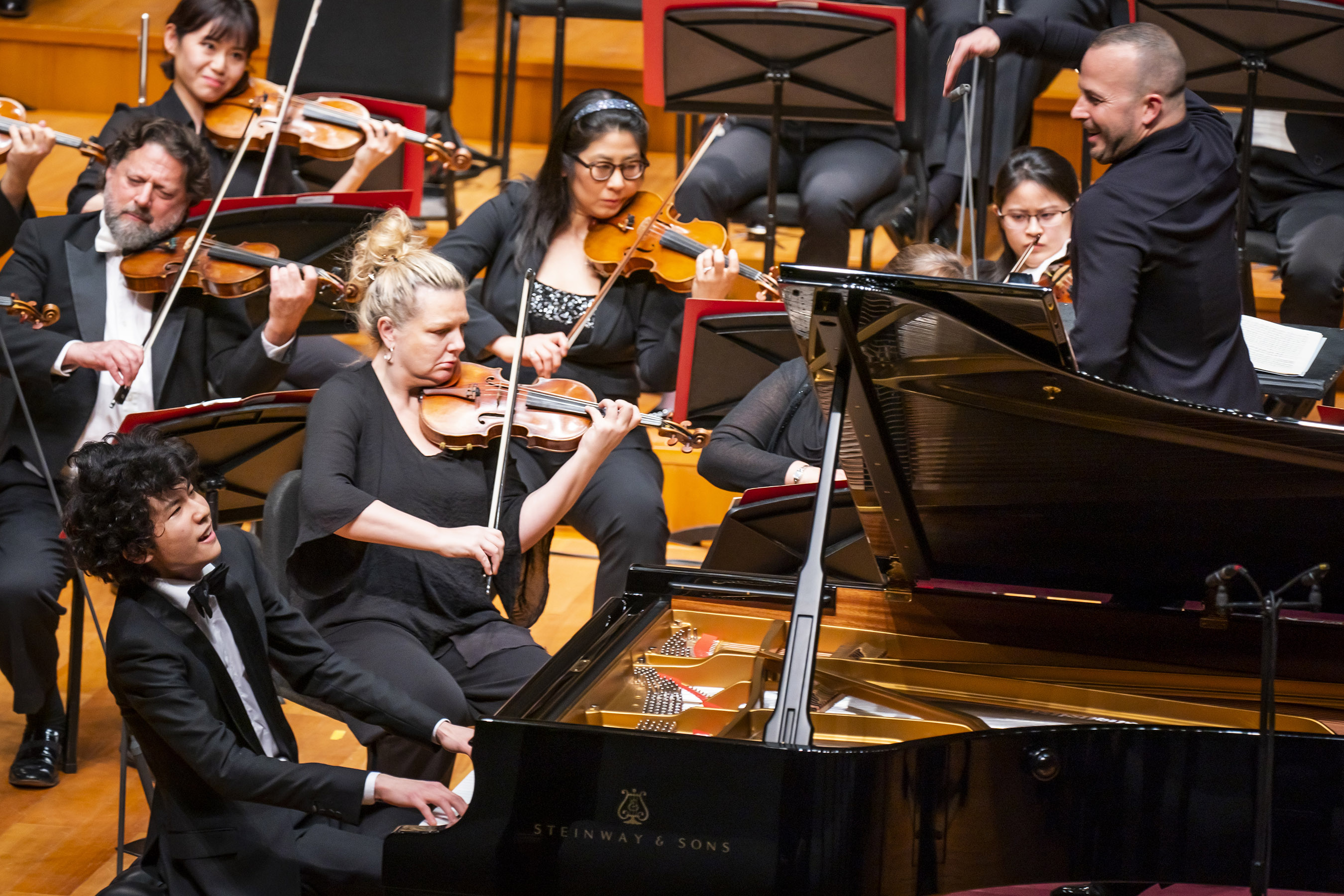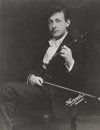Reviews
Inaugural China Competition: An Eyewitness Judges the Results
MILAN--An event as self-consciously conspicuous as Beijing’s first China International Piano Competition was always bound to court controversy. When 18-year-old Canadian Tony Siqi Yun won the first prize of $150,000, commentators suggested his connections with New York’s Juilliard School, where he is enrolled at the Pre College Division, and where the Competition’s Artistic Director Yoheved Kaplinsky runs the piano department, had tipped the balance. Perhaps; certainly second- and third-place winners Alexander Malofeev (17) and Mackensie Melemed (24) were of a competition-winning level. But Yun’s brilliant playing was, if imperfect, the most exhilarating.
Peng Liyuan, the wife of President Xi Jinping and formerly a soprano at the China Conservatory, never showed up, rumors to the contrary. Nonetheless, a sense grandiosity prevailed: Kaplinsky had assembled a distinguished jury. All three finalists performed at the iconic National Center for Performing Arts with the Philadelphia Orchestra and Yannick Nézet-Séguin. In addition to the cash prize, immediate signings with top agents Opus 3 (America and Europe) and Armstrong Music & Arts (China) were at stake for the top competitor.
That the 20 candidates were selected through recommendations rather than auditions did not sit well with many observers, and the insistence by General Manager Richard Rodzinski that time constraints were to blame hardly dispelled doubts about the fairness of the event. What’s more, eight of the 20 are or have been Juilliard-trained, a perceived conflict of interest for the artistic director. Some suggested that the jurors’ votes should have been made public.
 Tony Siqi Yun plays the Tchakovsky Piano Concerto No. 1 with the Philadelphia Orchestra under Yannick Nézet-Séguin
Tony Siqi Yun plays the Tchakovsky Piano Concerto No. 1 with the Philadelphia Orchestra under Yannick Nézet-Séguin
Rodzinski, former head of the Chopin and Tchaikovsky competitions, scheduled a preliminary round of a solo recital; a semi-final comprising both solo and accompaniment for vocal recitals; and a two-stage final with six pianists accompanied by the Orchestra Academia China in stage one, followed by three with the Philadelphia Orchestra in stage two.
Rodzinski told me that managing state funds in heavily bureaucratic China made organizing the event complex and slow. A lack of readily available technology necessitated the use of written ballots rather than the computerized systems he has latterly used elsewhere. Jurors were asked cast votes from three (“yes, absolutely, I really want to hear this pianist again”) to 0 (“not really”).
Rodzinski was able to enlist the Philadelphia Orchestra, the first American orchestra to visit the People’s Republic of China, in 1973, because it was touring the nation—for the 12th time. It kicked off the competition with a spine-tingling reading of the Prelude to Lohengrin, the batonless Nézet-Séguin conjuring a sound so tender it was at first barely audible. Playing was fluid, pliable, and had an airborne quality, before the entry of the winds made the sound cohere. Kaplinsky has said one of the Competition’s key aims is to set a new benchmark of quality for Chinese musicians. What a smart move, then, to have included this special conductor-orchestra partnership.
They were excellent accompanists. Yun’s pearly rendition of Mozart’s Piano Concerto No. 20 in Stage I of the final made you wonder whether he would have enough firepower to pull off Tchaikovsky’s Piano Concerto No. 1 in Stage II. But, as if galvanized by the orchestra’s emphatic introduction, Yun tore into his opening chords and made the steely cadenza that follows sting. He had the requisite nuance to pull off the chromatically complex and varied work, and seemed equally comfortable with the work’s unbuttoned tempestuousness, yearning romanticism, and filigree runs.
Nézet-Séguin, clearly keen to show the soloists at their best, rallied the orchestra and sometimes pushed Yun a touch too far, smothering him on occasion and causing him to stumble in one or two of his runs. That said, Yun mostly thrived. There was fine communication between pianist and conductor, Yun more than capable of fading into the background. Especially beautiful was the translucent gauze he weaved around the solos at the start of the second movement.
The pianist’s singular personality never dimmed. Even the stormiest passages were shot through with Yun’s trademark vulnerability. How much ought physical appeal be allowed to impact the judges’ verdicts? Left leg cocked behind the stool, tilted head expressing rapture, hands suspended in mid-air and quivering with excitement, Yun cuts a compellingly poetic figure. The agents, no doubt, were thrilled with what promises to be a highly marketable personality.
Melemed’s was a comparatively no-nonsense rendition of Rachmaninov’s Rhapsody on a Theme of Paganini--as well as clean, powerful, and technically assured--making it clear why the jurors had been excited by the pianist in the earlier rounds. Melemed was fully in control of the work’s boldly contrasting textures (the swirling mists of Variation 11, the crackling lightning bolts of the final one), which were for the most part stylishly shaped. The Philadelphia Orchestra, which premiered the piece in 1934, was an incisive accompanist. During the final solo flurry, Nézet-Séguin seemed to pry into the pianist’s sound and drive it from within. Pushed to the brink, Melemed robustly stood his ground–-it made for an exhilarating climax.
For true powerhouse pianism, however, Malofeev was the man. The fiery Russian strode on stage purposefully, before crouching over the keyboard and launching into an aggressive attack on the helter-skelter scales and growling chords that open Prokofiev’s Piano Concerto No. 3. He never looked back.
You could sense Nézet-Séguin trying to get more of a dialogue going, but, eyes fixed firmly on the finish line, Malofeev apparently had little time for such niceties. Certainly, the sheer feral intensity and mechanical accuracy of this performance was impressive, and the wistful recollections, spidery runs, and the eerie coils of the “Tema con variazioni” were compellingly done. But the piece, which ranges mostly from spectral to blazing, is expressively limited compared to the other works on offer. That Malofeev has fearsome technique and tigrine ferocity was never in doubt. It would have been nice to hear what else he can do.
Before the announcement of the winner, China Conservatory and Competition President Wang Liguant—also a composer, influential Chinese Communist party member, and editor of half a dozen state-run newspapers—eulogized music’s ability to build bridges between nations. His speech rambled and the translation into English was inaudible over bursts of applause, such that, when the winner was finally announced, nobody could hear who it was. It was a chaotic anticlimax to what had been an exceptional evening of music making. The Competition will spotlight other instruments in future years, and the plan is to have an open application process. As long as such large prizes are on offer, though, it seems likely that some controversy will always surround the event.
Photo by Chris Lee





 FEATURED JOBS
FEATURED JOBS

 RENT A PHOTO
RENT A PHOTO


